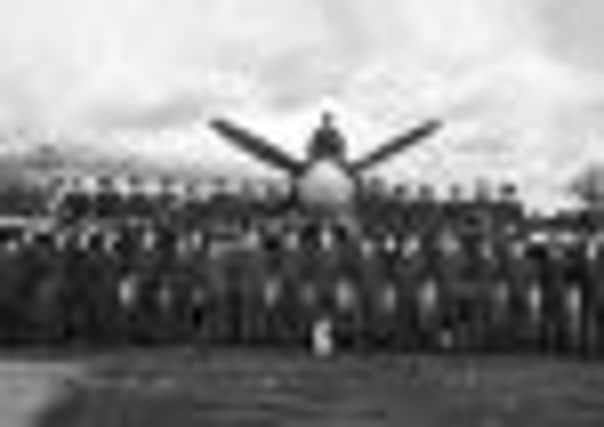DOWN MEMORY LANE: Tangmere's Typhoons


However, when the aircraft was delivered to the RAF, a number of unexplained fatal accidents occurred; the cause was found to be a fatigue problem in the rear fuselage joint.
The early Typhoons also suffered from engine failures until a new more powerful Napier Sabre engine was introduced.
Advertisement
Hide AdAdvertisement
Hide AdBy 1942, these problems had been largely solved and, although the aircraft’s performance was poor at medium and high levels, the Typhoon excelled at low altitude and could be used to good effect to counteract the Luftwaffe’s use of Fw 190 fighter bombers who were making hit-and-run raids on Britain’s south-coast towns.
No 486 Royal New Zealand Air Force (RNZAF) Squadron arrived at RAF Tangmere on October 30, 1942, equipped with the Hawker Typhoon IB.
Defensive
For the first five months of the squadron’s stay at Tangmere, its Typhoons were used as low-level interceptors to patrol against the hit-and-run Fw 190 raids.
In March 1943, No 486 was joined by another Typhoon squadron, No. 197, which had formed the previous December at Drem, East Lothian, Scotland.
Advertisement
Hide AdAdvertisement
Hide AdNo 197’s first operational sorties from Tangmere consisted mainly of defensive standing patrols some five miles from the coast between Beachy Head and the Needles, these hourly patrols being flown from dawn until dusk.
From April, the number of these hit-and-run raids diminished and shortly after, Squadron Leader Desmond Scott, a New Zealander, took over No 486 and it was allowed to turn to offensive operations across the Channel into northern France.
Within two weeks of commencing these operations the squadron had claimed two Fw 190s destroyed, another probably destroyed and a fourth damaged.
Attack
During the summer of 1943, RAF fighter bombers were increasingly used to attack enemy airfields and No 197 became a ‘Bombphoon’ squadron with its aircraft converted to carry a 250lb bomb under each wing.
Advertisement
Hide AdAdvertisement
Hide AdIt was not unusual for the two Tangmere Typhoon squadrons to operate as a ‘Wing’ with No 197 being tasked on a bombing mission with the Kiwi squadron escorting.
In September, another Typhoon squadron, No 183, joined Nos 486 and 197 and Squadron Leader Scott was promoted to Wing Commander to command the Tangmere Typhoon Wing.
With the formation of the Wing, came a new role for No 486 and 183 Squadrons – fighter bombing.
In this, the two squadrons joined No 197 Squadron in becoming proficient at medium and low-level bombing.
Advertisement
Hide AdAdvertisement
Hide AdIn November 1943, the Wing was tasked with a dive-bombing mission on the construction site of one of Hitler’s ‘reprisal weapons’ (Vergeltungswaffe) – the V3.
Near Mimoyecques in the Pas de Calais, a large underground complex was being built to house five shafts, each designed to hold five long-barrelled 120-metre guns.
These would have the ability to fire 300 shells each hour at London.
The V3 complex was not the only ‘reprisal weapon’ site identified and targeted that autumn; V1 (‘Doodlebug’) flying bomb sites were also attacked in the Pas de Calais and on the Cherbourg peninsular by the Tangmere Typhoon Wing.
Advertisement
Hide AdAdvertisement
Hide AdThe end of the year saw Tangmere’s Typhoons continuing to take the fight to the enemy with further missions escorting light bombers to disrupt the building of the V1 and V3 launch sights and their supply depots.
Get in touch
You can email your memories to [email protected] or write to The Observer, Unicorn House, 8 Eastgate Square, Chichester, PO19 1JN.